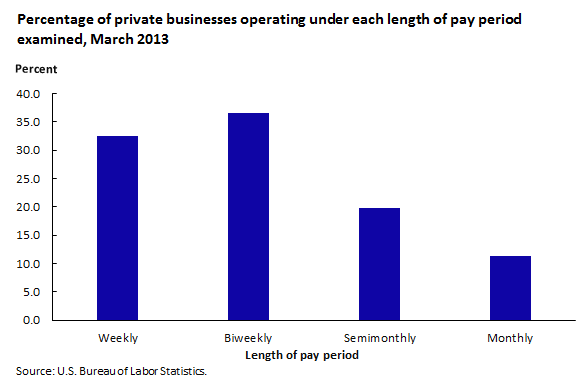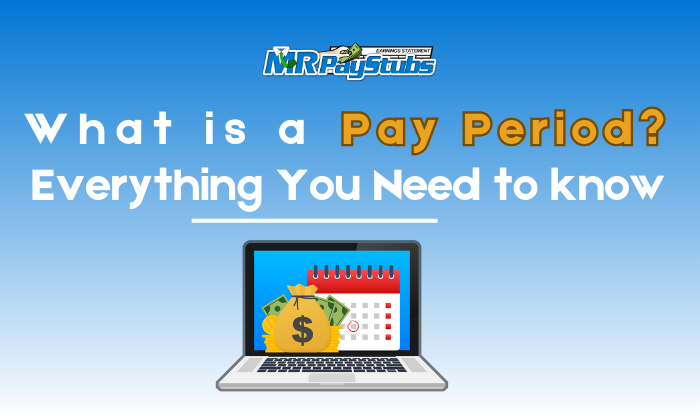
A pay period is a time frame in which you receive your earnings from a company. Pay periods are used by businesses of all sizes to manage their accounting for payroll. If you have pay stubs, your pay period will be on your pay stubs. There are several pay periods businesses will choose based on their needs.
Table of Contents
8 Pay Periods Businesses Consider
| Pay Period | Number of Pay Period in a Year |
| Daily | 365 |
| Weekly | 52 |
| Bi-Weekly | 26 |
| Semi-Monthly | 24 |
| Monthly | 12 |
| Quarterly | 4 |
| Semi-Annually | 2 |
| Annually | 1 |
Most common Pay Periods
According to US Bureau of Labor Statistics, the most commonly used pay periods by businesses is bi-weekly, weekly, and semi-monthly pay periods respectively.
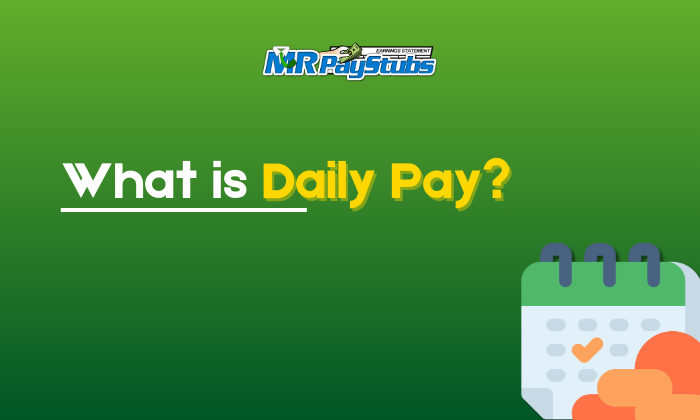
What is Daily Pay?
Daily pay is when you get paid at the end of each day. Regardless if you get paid a flat daily salary or by the hour.
Pros of Daily Pay Period
The pros to having daily pay include you don’t have to wait for your pay—you get it at the end of the day. Workers who are paid daily will work faster because they don’t have to wait a whole month to get paid.
Cons of Daily Pay Period
The con to having daily pay its harder to budget for the month or the longer.
Examples of jobs that use a daily pay period include stay-at home moms, freelancers, college students or interns, and labor workers. Daily pay periods are often used for tips in the restaurant industry.
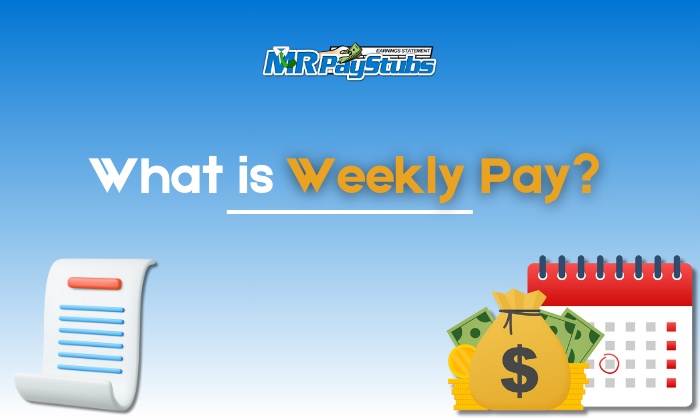
What is Weekly Pay?
Weekly pay is when you get paid every 7 days. If your pay period starts on Monday, you usually get paid on Friday at the end of the day.
The weekly pay schedule is a common pay schedule in the US and has grown popular over the years. Since there are 52 weeks in a year, there are 52 weekly pay periods as well.
While not used in all industries, weekly pay is the standard schedule in retail, retail, wholesale, and food service workplaces.
Pros of Weekly Pay Period
The pros to having weekly pay include you can plan time for fun as well as budget for future expenditures; you can save for something special. You will know how much you have left as opposed to daily pay where you don’t always get save at the end of day.
Cons of Weekly Pay Period
The cons to having weekly pay include being given a smaller paycheck then if you had bi-weekly or semi-monthly pay. Therefore, it’s harder to plan just because life happens, and you may not be able to save all your money. It is easy to lose track of your spending, because it happened over a few days instead of the same day.
What is Bi-Weekly Pay?
Biweekly pay refers to a system of paying employees’ salaries every two weeks. For example, someone may get paid every other Friday. The Biweekly pay schedule typically ends up being about twice a month interval, which translates to 26 paychecks per year.
Pros of Bi-Weekly Pay Period
Biweekly pay translates to 26 paychecks per year versus 12 paychecks on a monthly pay schedule. This means it’s easier to budget your salary.
Cons of Bi-Weekly Pay Period
The cons to Bi-Weekly Pay include it costs the employer more to do payroll compared to a monthly pay schedule because there are more pay checks. On top of that, paychecks are costly to print and mail/deposit. It takes longer total hours to process payroll checks.
What is Semi-Monthly Pay?
Semi-monthly pay is when you get paid twice a month. Once paycheck would be due on the 1st date of the month and the second on 15th of the month.
Semi-monthly pay is a variation of bi-weekly and monthly pay periods. Semi-monthly means less commonly then monthly or twice daily usually once every three months to four months. Bank payroll deposits that generate through payday loans UK may be referred to as semi-monthly payments.
Pros of Semi Monthly Pay Period
The pros to the Semi Monthly Pay include having twice as many checks as bi-weekly pay, but without extra accounting paperwork because those check would match up with your paycheck from the previous month; it’s convenient for people who get paid bi-weekly sometimes their employer will only give them two whole weeks’ worth of paychecks in one month, making it harder for them to manage their finances correctly.
Cons of Semi Monthly Pay Period
Paying employees twice a month increases total hours spent on processing payroll checks & depositing funds into bank accounts hourly salary & salaried workers.
Semi Monthly Pay is commonly used in the United States and Canada by salaried and hourly workers.
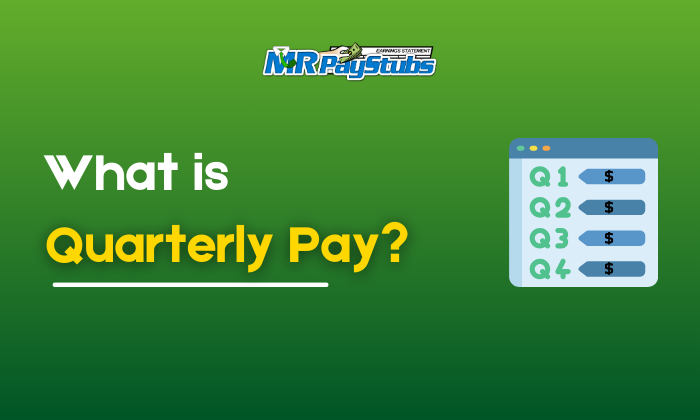
What is Quarterly Pay?
Quarterly pay is when you get paid every quarter or 4 times a year. The quarters are typically as follows:
| Quarter | Months | Pay Period | Pay Date |
| 1st | January, February, March | January 1st – March 31st | April 1st |
| 2nd | April, May, June | April 1st – June 30st | July 1st |
| 3rd | July, August, September | July 1st – September 30st | October 1st |
| 4th | October, November, December | October 1st – December 31st | January 1st |
If businesses do use a quarterly system, it is more for supplemental income and not regular income. Supplemental income includes bonuses, commissions, etc.
Pros of Quarterly Pay Period
The pros of having Quarterly Pay include receiving large paychecks 4 times a year. It is like saving 3 months worth of pay checks in one.
Cons of Quarterly Pay Period
The cons of having quarterly pay include you cannot plan around an annual event such as vacations without risking running out of funds mid-way through one payday versus biweekly pay periods which already come back two weeks those employees who feel that receiving four payments instead of twelve over the year is very beneficial
Semi-Annual Pay
Semi-Annual pay is when you get paid every 6 months, or twice a year. If a person uses a semi-annual pay system, it is more for supplemental income, not regular income. Supplemental sources include compensation, bonuses, and commissions.
| Pay | Months | Pay Period | Pay Date |
| Pay #1 | January, February, March, April, May, June | January 1st – June 30st | July 1st |
| Pay #2 | July, August, September, October, November, December | July 1st – December 31st | Jan 1st |
If businesses do use a semi-annual pay system, it is more for supplemental income and not regular income. Supplemental income includes bonuses, commissions, etc.
Pros of Semi-Annual Pay Period
Semi-annual pays gives employees an opportunity to be able to save up more, pay off debt and celebrate holidays and additional time. But with semi-annual pay which is every six months there are two places called tax & payday so now both of those big events seem bigger than before.
Cons of Semi-Annual Pay Period
Heading into winter and having not yet been paid giving your employer plenty of snow days that could hinder the overall business performance just because they will either shut down earlier than expected or you’re without a paycheck during this rare holiday season.
It seems like we go from fall to spring every year just after spending our last paychecks, or a combination of both, which seems much longer to begin with.
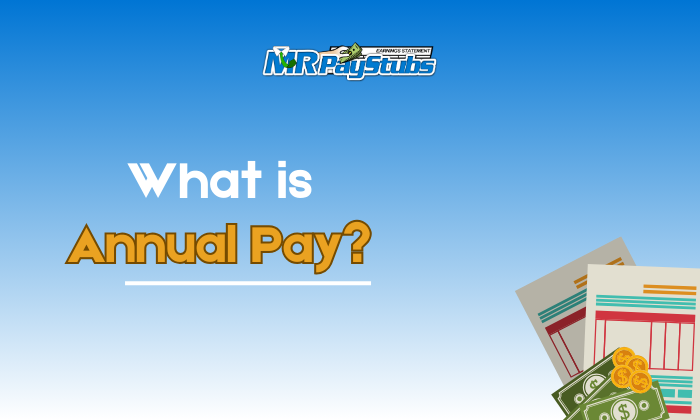
What is Annual Pay?
Annual Pay is when you are paid once a year. The pay schedule typically runs from January 1st, to the last day of the year, December 31st. Many businesses will use an annual pay schedule for supplemental income such bonuses and commission.
Pros of Annual Pay Period
The main pro to Annual Pay is you get paid a large sum amount. Which can make it easier to make big purchases. For example, a $6,000 annual bonus sounds like a big bonus, but it is only $500 a month ($6000 / 12 months).
If you were given an extra $500 a month, you may spend it on smaller purchases, whereas if you were given $6000, you may consider a larger purchase.
Cons of Annual Pay Period
One con to Annual Pay is if any income changes midyear, you will need to wait until next year for final settlement. Another con to annual pay is you have to budget for every paycheck. Annual Pay businesses can be very diverse such as medical doctors and dentists, tax accountants and attorneys etc.
Annual pay schedule is common for people that get bonuses and commissions, since their earnings aren’t always varying amounts.
Frequently Asked Questions about Pay Periods
What Is A Pay Period?
A pay period is a time frame in which you receive your earnings from a company. It is used in payroll and accounting as the period of time over which one company payroll is processed. There are 8 pay periods businesses often consider.
Daily
Weekly
Bi-Weekly
Semi-Monthly
Monthly
Quarterly
Semi-Annually
Annually
Typically, companies pay their employees on either a weekly or biweekly basis. The length of time between each pay is considered the “pay period”.
How Long Is A Pay Period?
It depends on the pay period chosen by a company. Typically, companies pay their employees on either a weekly or biweekly basis. Therefore, a weekly pay period would be 7 days. Whereas a Bi-weekly pay period would be 14 days or two weeks.
What Is Pay Period?
A pay period is a time frame in which you receive your earnings from a company. It is used in payroll and accounting as the period of time over which one company payroll is processed. There are 8 pay periods business often consider.
Daily
Weekly
Bi-Weekly
Semi-Monthly
Monthly
Quarterly
Semi-Annually
Annually
Typically, companies pay their employees on either a weekly or biweekly basis. The length of time between each pay is considered the “pay period”. On a semi-monthly pay period, employees are paid 2 times a month.
How Long After A Pay Period Should I Get Paid?
It depends on the pay period chosen by a company. Typically, companies pay their employees on either a weekly or biweekly basis. Therefore, a weekly pay period would be 7 days. Whereas a Bi-weekly pay period would be 14 days or two weeks.
What Does Per Pay Period Mean?
Per pay period is a term used in payroll and accounting to refer to an amount paid per specific time interval. There are 8 pay periods business often consider.
Daily
Weekly
Bi-Weekly
Semi-Monthly
Monthly
Quarterly
Semi-Annually
Annually
Biweekly, and Weekly are the most common pay periods used for payroll.
What Does Pay Period Mean?
Pay period is the division of time between two pay checks or salary payments. For example, if you’re paid every two weeks, then your pay period would be Bi-Weekly. If you were paid Weekly instead, then your pay period would be every 7 days or once a week.
What Is Per Pay Period?
A pay period is a time frame in which you receive your earnings from a company. Therefore, per pay period would mean for each time from in which you receive your earnings.
What Does Pay Period Ytd Mean?
Pay Period YTD or Pay Period Year to Date means the amount of earnings accumulated up to and including the date specified. Year to Date is often used on Pay Stubs to keep track of accumulated earnings or amounts including amounts on the current pay stub.
What Pay Period Are We In?
It depends on the pay period chosen by a company. Typically, companies pay their employees on either a weekly or biweekly basis. Therefore, a weekly pay period would be 7 days. Whereas a bi weekly pay period would be 2 weeks or every other week.
How Many Pay Period in A Year?
It depends on the pay period chosen by a company. There are 8 pay periods business often consider. Typically, companies pay their employees on either a weekly or biweekly basis. The following list shows the number of pay periods in a year for each pay period range.
Daily – 365
Weekly – 52
Bi-Weekly – 26
Semi-Monthly – 24
Monthly – 12
Quarterly – 4
Semi-Annually – 2
Annually – 1
What Is Pay Period Ytd?
Pay Period YTD or Pay Period Year to Date means the amount of earnings accumulated up to and including the date specified. Year to Date is often used on Pay Stubs to keep track of accumulated earnings or amounts including amounts on the current pay stub.
When Does the Pay Period End?
It depends on the pay period chosen by a company. The pay period ends on a set date that is stipulated in the employment contract itself. Typically, companies pay their employees on either a weekly or biweekly basis.
How Many Hours in a Pay Period?
It depends on the pay period chosen by a company. There are 8 pay periods business often consider. Typically, companies pay their employees on either a weekly or biweekly basis. Considering the standard 8 hours a day and no overtime, here are the number of hours in each pay period.
Daily – 8 Hours
Weekly – 40 Hours
Bi-Weekly – 80 Hours
Semi-Monthly – 86.67 Hours
Monthly – 173.33 Hours
Quarterly – 520 Hours
Semi-Annually – 1040 Hours
Annually – 2080 Hours
Final Thoughts
Businesses use Pay periods to manage their payroll. Pay periods are used for day-to-day operations as well as long term financial, legal and tax reasons.
The advantages and disadvantages depend on the type of business and the pay period used. And if it benefits the employer or the employee.
Regardless of the pay period it all comes down to how well you can budget. If you need help determining an ideal pay period for your own personal needs, check out the pay stub generator.
You can select various pay periods and calculate the differences in taxes and other withholdings.
